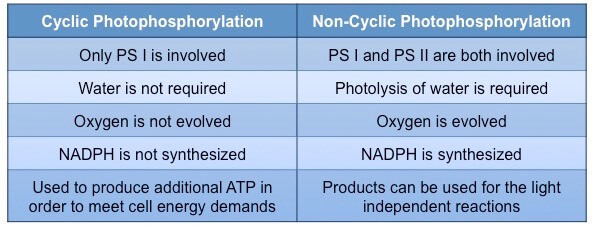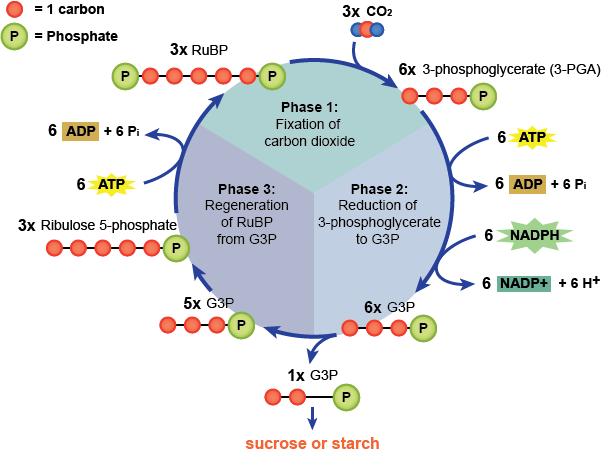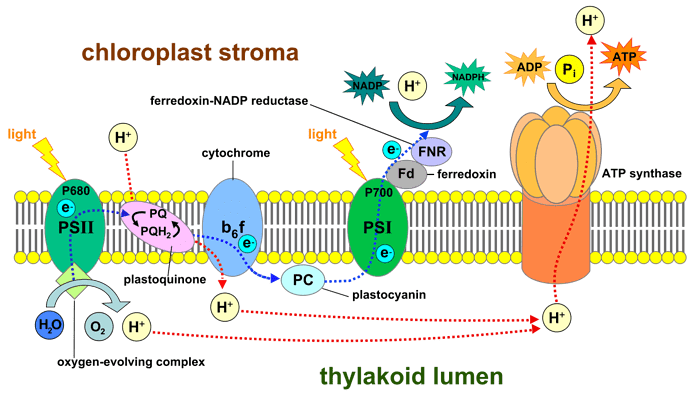PHOTOSYNTHESIS
-
Phtosynthesis occurs in the chloroplast
-
What is the general reaction of photosynthesis?

- What are the differences between cyclic and non cyclic photophosporylation?

- What are the 2 phases of photosynthesis?
- What are the 3 steps of photosynthesis?
1. light excites chlorophyll electrons and they become energized
2. excited electrons pass through electron transport chain, making ATP via chemiosmosis
3. electrons may reduce NADP+ and be replaced by photolysis of water
- What happens in light dependant reactions?
-
Photosystems are photosynthetic pigments embedded within the thylakoid membrane
-
In cyclic photophosphorylation, only PSI is involved, water is not required oxygen is not evolved, and NADPH is not synthesized
-
Cyclic photophosphorylation is used to produce additional ATP in order to meet cell energy demands
-
In non-cyclic photophosphorylation, PSI and PSII are involved, photolysis of water is required, oxygen is devolved, and NADH is synthesized
-
Photosystem I absorbs light at 700nm and photosystem II absorbs light at 680nm
-
What are the steps of the Calvin cycle?
- Carboxylation of ribulose bisphosphate
- Reduction of glycerate-3-phosphate
- Regeneration of ribulose bisphosphate
-
The proton gradient will be used by ATP synthase to create ATP from ADP+Pi
-
What happens in light-independent reactions?

It is the Calvin cycle

